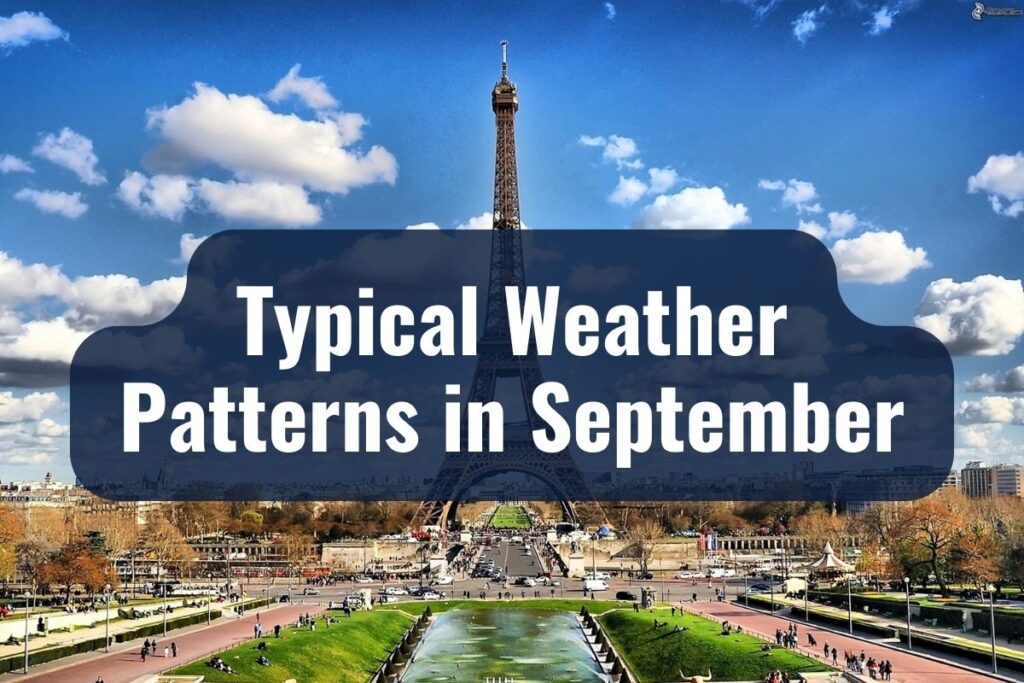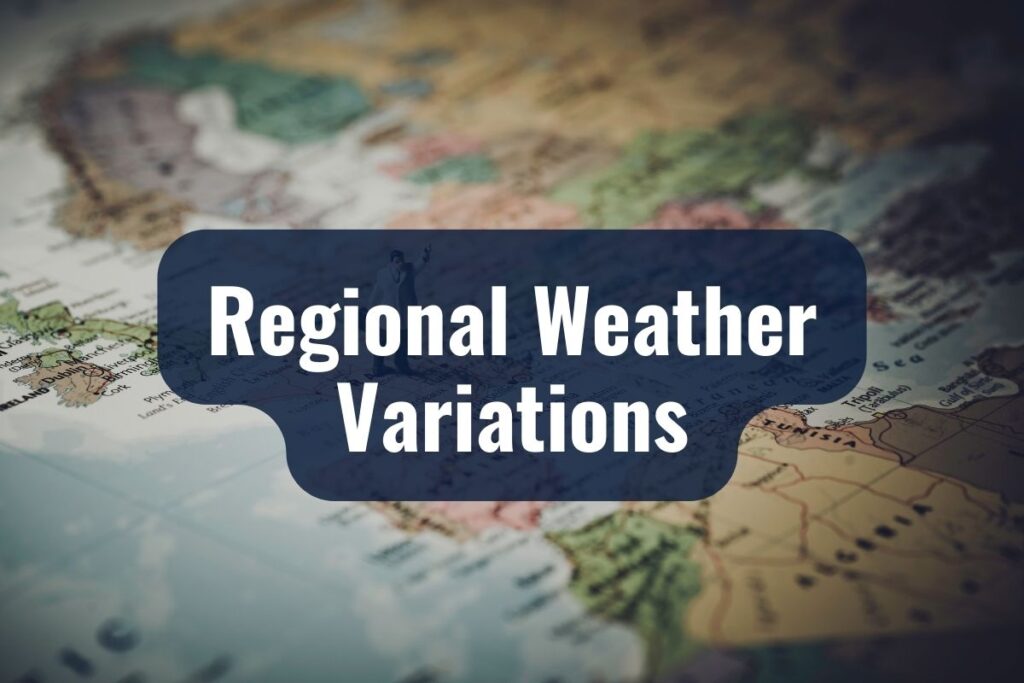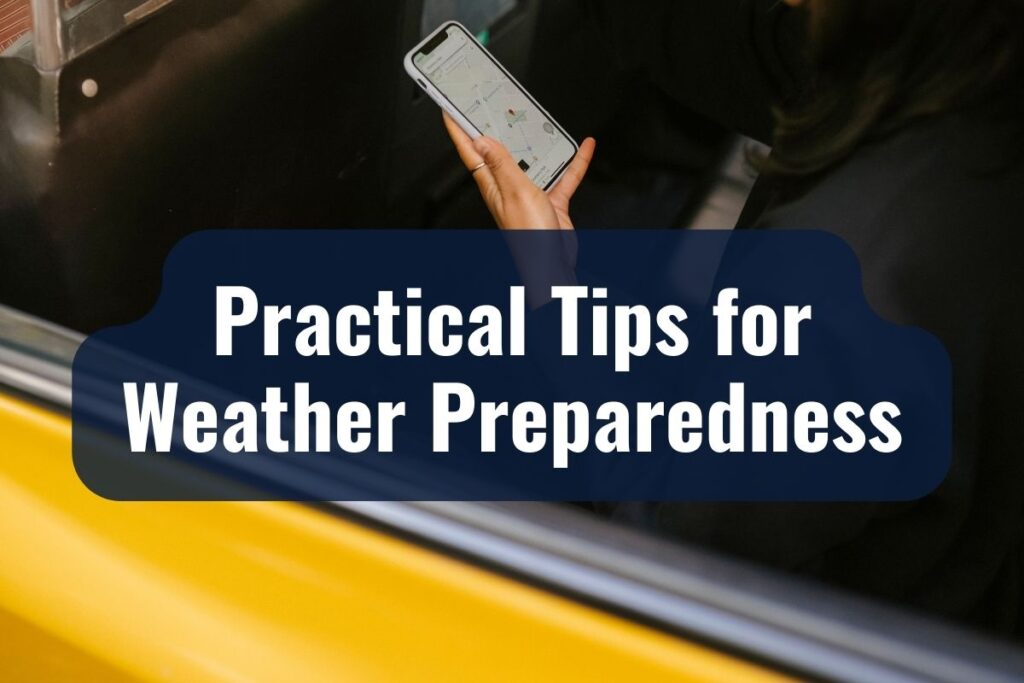France is renowned for its diverse climate zones, shaped by its geographical spread from the North Sea to the Mediterranean. This variety means that the weather can vary significantly from one region to another, making it crucial for visitors and new residents to understand what to expect, especially in transitional months like September.
Whether you’re in France for travel, study, or relocation, grasping the September climate will enhance your experience, allowing you to make the most of outdoor activities and cultural events while being prepared for the country’s varied conditions.
KEY TAKEAWAYS
- Diverse Climate: France’s varied geography leads to distinct weather patterns across regions in September.
- Layering Essential: The fluctuating September temperatures make layering a critical aspect of dressing.
- September Activities: Enjoy outdoor activities, cultural events, and local festivals that are especially delightful in the mild September weather.
- Weather Preparedness: Regularly consult local forecasts and plan accordingly to ensure a smooth and enjoyable stay.
The Significance of September Weather
September marks the transition from the warm summer months to the cooler autumn. It’s a month where you can experience the late summer warmth while observing the first signs of autumn. Knowing the weather patterns during this time is essential for planning everything from daily activities to wardrobe choices.
Typical Weather Patterns in September

Temperature Ranges Across France
In September, France begins to cool down as it moves from the summer heat into milder autumn temperatures. However, the extent of this change varies widely across different regions:
North France: Here, temperatures start to drop more noticeably, with averages ranging from 12°C to 20°C. Mornings and evenings can feel particularly crisp.
South France: The Mediterranean influence keeps the south warmer, with average temperatures lingering between 15°C and 25°C. Coastal areas especially retain the summer warmth, making it a favorite for late-season vacationers.
East France: Eastern areas, especially near the Alps, experience a range of temperatures, from cooler mountainous regions averaging 10°C to warmer lowland areas around 20°C.
West France: The Atlantic coast brings mild weather, with temperatures averaging between 13°C and 22°C, influenced by the oceanic climate.
Central France: The heartland sees average temperatures similar to the north, between 12°C and 21°C, with a gradual decrease in warmth as the month progresses.
Rainfall and Frequency of Rainy Days
September can be relatively dry, but rainfall varies by region.
North and West France: These areas see more frequent rain, although it’s usually not as heavy as in the winter months. Packing an umbrella or a light raincoat is advisable.
South France: Rainfall is less frequent here, but when it does rain, it can be heavy and sometimes accompanied by storms, particularly along the Mediterranean.
Central and East France: Expect moderate rainfall, with occasional showers breaking the otherwise sunny days.
Daylight and Changing Days
As autumn approaches, the days gradually become shorter. By the end of September, there’s a noticeable difference in daylight hours.
Early sunsets and later sunrises mean cooler evenings and mornings, so it’s wise to prepare for a wider range of temperatures throughout the day. This change in light also brings beautiful early autumnal hues, making it a picturesque time to explore France’s outdoor beauty.
Regional Weather Variations

| Region | Average Low (°C) | Average High (°C) |
| North | 12 | 20 |
| South | 15 | 25 |
| East | 10 | 20 |
| West | 13 | 22 |
| Central | 12 | 21 |
North France: Normandy, Brittany, and Parisian Region
Normandy and Brittany: These regions are known for their maritime climate, which leads to mild and moist weather. September brings cooler, windy conditions, especially near the coast, with temperatures averaging 15°C to 20°C. Rain is common, so waterproof gear is recommended.
Parisian Region: The capital and its surroundings experience a moderate climate with mild temperatures in September, typically ranging from 13°C to 20°C. While there are many sunny days, the weather can shift quickly, so layers are advisable.
South France: Mediterranean Coast and Inland Areas
Mediterranean Coast: Cities like Nice, Marseille, and Montpellier enjoy a warm September, with temperatures often between 18°C to 26°C. The sea remains warm enough for swimming, and rain is less frequent but occasionally intense.
Inland Areas (e.g., Provence): Inland areas maintain warm temperatures but begin to cool down at night. The famous Mistral wind can bring sudden changes in weather, particularly affecting the Rhône Valley.
East France: Alsace, Lorraine, and the French Alps
Alsace and Lorraine: These regions have a semi-continental climate, with September seeing temperatures ranging from 10°C to 20°C. Rainfall is moderate, but there are plenty of clear, sunny days ideal for exploring the historic villages and vineyards.
French Alps: The weather in the Alps is variable and can change rapidly. September is generally cool, especially at higher altitudes, with temperatures dropping below 10°C in some places. It’s a quieter time for tourism, offering a peaceful experience of the mountains.
West France: Aquitaine and the Atlantic Coast
Aquitaine and the Atlantic Coast: This area enjoys a mild climate with an oceanic influence, leading to temperatures between 14°C and 22°C. Rain is possible, but there are also many clear days. The Atlantic Ocean starts to cool, yet it’s still popular for water sports and beach visits.
Central France: Loire Valley and Massif Central
Loire Valley: Known for its chateaus and vineyards, the Loire Valley has a temperate climate, with September temperatures averaging 12°C to 21°C. The weather is generally pleasant, with a mix of sunny days and occasional rain.
Massif Central: This elevated region has a more mountainous climate, with cooler temperatures and more variable weather. September brings a mix of sunny spells and showers, with temperatures often cooler than the surrounding lowlands, especially at higher elevations.
What to Wear: September Wardrobe Tips
General Clothing Advice for Fluctuating Temperatures
September’s varied temperatures across France mean that layering is key. Start with a base of light, breathable fabrics and add layers such as sweaters or cardigans that can be easily removed as the day warms. A lightweight waterproof jacket or a trench coat is also a good idea for unexpected showers.
Recommendations for Both Dry and Rainy Days
Dry Days: For sunnier days, especially in the south or central parts of France, wear comfortable, breathable clothing like cotton shirts, dresses, and loose trousers. Don’t forget a hat and sunglasses for protection against the still-potent sun.
Rainy Days: On wetter days, especially common in the north and west, opt for waterproof outerwear. Consider waterproof shoes or boots to keep your feet dry, and carry an umbrella.
Special Regional Considerations
In the Mountains (Alps, Pyrenees, Massif Central): If you’re planning to visit higher altitudes, bring warm layers, including fleece or wool sweaters and a windproof jacket. The weather can change rapidly in mountainous areas, so be prepared for colder conditions.
Mediterranean Coast: Evenings can still be warm, so light, airy clothing is comfortable, but have a shawl or light jacket for when the temperature drops at night. The sun can be strong, so a sunhat and sunscreen are important.
Northern and Central France: The climate is more temperate, so mid-layers like long-sleeve tops and light sweaters are versatile for day-to-night temperature variations.
Western France: Given its oceanic climate, always be ready for a breeze or sudden shower with a lightweight scarf and a waterproof layer.
Activities and Events in September

Outdoor Activities Best Suited for September’s Weather
Hiking and Walking Tours
With the cooler temperatures and fewer crowds, September is ideal for hiking in the countryside, whether it’s the vineyards of Bordeaux, the mountains of the Alps, or the coastal paths of Brittany.
Wine Harvesting Events
Many regions, particularly Bordeaux, Burgundy, and the Loire Valley begin their grape harvests, and visitors can often participate in harvest festivals and wine-tasting events.
Beach Visits
In the south of France, the Mediterranean coast still enjoys warm weather, making it a great time for less-crowded beach visits and water activities.
Notable Festivals and Events
La Braderie de Lille: One of Europe’s largest flea markets takes place in Lille during the first weekend of September, attracting millions of visitors.
Journées du Patrimoine (Heritage Days): Typically held the third weekend of September, this event offers free access to many sites and monuments that are usually closed to the public.
Fête de la Gastronomie: A countrywide celebration of French cuisine, where cities and towns host events and markets showcasing local specialties.
Advice on Enjoying France’s Natural and Cultural Sites
Natural Sites: Take advantage of the mild weather to visit France’s national parks, gardens, and the beautiful Loire Valley châteaux. The reduced heat makes it comfortable for longer explorations.
Cultural Sites: Museums and historical sites are less crowded in September. It’s a good time to visit popular spots like the Louvre, Mont Saint-Michel, or the châteaux of Versailles with shorter queues and a more relaxed pace.
City Tours: Cities like Paris, Lyon, and Marseille offer a different charm in the early autumn. Enjoy open-air cafes, street markets, and river cruises without the intense heat or crowds of summer.
Practical Tips for Weather Preparedness

Understanding and Accessing Local Weather Forecasts
Stay Informed: Regularly check the weather forecasts for your specific location in France, as conditions can vary greatly between regions. Websites like Météo France provide detailed forecasts.
Mobile Apps: Download a reliable weather app on your smartphone for real-time updates and alerts. Many apps offer localized weather information, which can be particularly useful when traveling between different parts of the country.
Tips on Transportation and Travel Considering Potential Weather Disruptions
Plan Ahead
Be aware that weather can impact travel plans. On rainy or stormy days, allow extra time for travel, especially if you’re using public transportation.
Driving
If you’re renting a car, familiarize yourself with driving in wet conditions and know the local road rules. In mountainous regions, be prepared for more challenging driving conditions as the weather changes.
Public Transportation
Keep an eye on announcements from local transport authorities, as services may be affected during heavy rain or storms.
Health and Safety Considerations Related to Weather
Hydration and Sun Protection
Even in September, sunny days can be deceptively intense, especially in the south. Carry water, use sunscreen, and wear a hat to protect against sun exposure.
Dressing Appropriately
Ensure you’re dressed for the day’s weather to avoid discomfort or health issues. This is particularly important when engaging in outdoor activities like hiking, where weather conditions can change quickly.
Allergies and Air Quality
Be mindful of air quality and pollen forecasts, especially if you have respiratory conditions or allergies. Rural and urban areas can have different concerns, from harvest dust to traffic pollution.
By staying informed and prepared, you can navigate France’s September weather comfortably and safely, ensuring a pleasant experience whether you’re there for leisure, work, or study.


